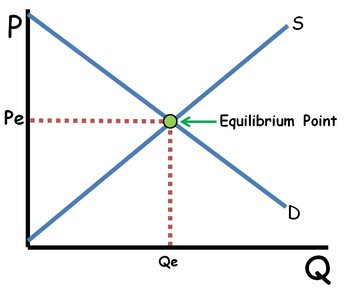Market equilibrium occurs where quantity demanded equals quantity supplied, determining the equilibrium price and quantity. For a detailed explanation, refer to AP Macroeconomics Market Equilibrium.
Here is a quick summary:
- Equilibrium:
- The point where the demand and supply curves intersect.
- At this price, the market clears with no surplus or shortage.
- Disequilibrium:
- Surplus: Quantity supplied > quantity demanded (price too high).
- Shortage: Quantity demanded > quantity supplied (price too low).
- Shifts in Equilibrium:
- A shift in demand or supply changes the equilibrium price and quantity.
- Simultaneous Shifts: The impact depends on the relative magnitude of the shifts.

Consumer Surplus
Consumer surplus is the difference between what consumers are willing to pay for a good and what they actually pay. For example, if a consumer is willing to pay $10 for a product priced at $7, their surplus is $3. Graphically, this is the area below the demand curve and above the equilibrium price.
Producer Surplus
Producer surplus is the difference between the price producers receive and the minimum price they are willing to accept. For example, if a producer is willing to sell for $5 but receives $7, their surplus is $2. Graphically, this is the area above the supply curve and below the equilibrium price.
Total Surplus
Total surplus is the sum of consumer and producer surplus, representing the total net benefit to society. Graphically, this is the area between the demand and supply curves up to the equilibrium quantity. Total surplus is maximized at equilibrium, indicating an efficient allocation of resources.
In efficient markets, resources are allocated at equilibrium, which maximizes total surplus. Any deviation from the equilibrium, like price controls, will reduce the total surplus and introduce deadweight loss.
Deadweight loss occurs when market outcomes are not at equilibrium due to external interventions like taxes, subsidies, or price controls. It represents the reduction in total surplus due to inefficiency.
